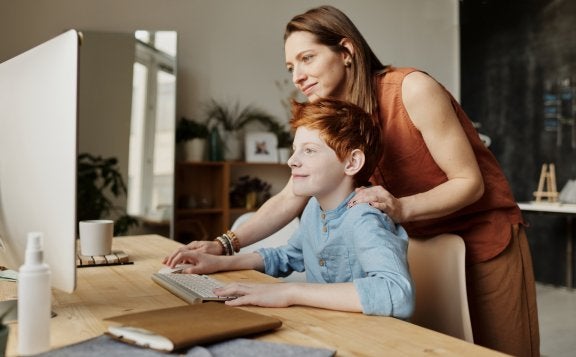Your Primer on Parental Controls

For a brief time some years ago, parental controls were all the rage. It seemed that every commercial for internet service, every radio advertisement, and every news segment focused around the novelty of parents being able to control what their kids accessed online.
Since then, parental controls have faded into the background of most conversations surrounding how we use tech-- but it's tough to understand why. Parental controls are an excellent way to ensure the content your family consumes (whether it's via television or the internet) is safe. While the technology is no longer fresh and exciting, parents shouldn't overlook the tremendous benefits it has to offer any household.
Parental Controls
Parental controls are a form of restriction that allow caregivers to control how and when their children access the internet or watch television. Some are as simple as time limits to avoid excessive tech use; others are a little more labor-intensive and keep impressionable kids away from less-savory corners of the internet. They can be used to:
- Filter and block inappropriate content
- Control how often or what time of day children have television, internet, or device access
- Restrict the length of time spent on the web
Varieties of parental controls
There are various types and levels of parental controls that caregivers and guardians can leverage to keep their kids safe. Network-level controls are handled via your router. They oftentimes apply to every device that's connected to that router, but many parental control options these days allow you to pick and choose which devices to restrict while they're connected.
You can also set controls at the device level. This usually involves using some sort of passcode or password (that your children don't know) to access restrictive settings on a phone, tablet, computer, or television. The benefit to controls like these is that they'll apply to the device no matter where it's connected to the internet, whereas network-level controls cease to protect kids once they're on someone else's network.
There are also application-level controls designed to limit how kids use specific platforms or applications. One commonly-restricted application nowadays is YouTube-- parents can set time limits and block certain content from appearing through searches or via the home page. The catch with controls on the application level is remembering to set them on each device your child uses.
Which parental controls are best?
Parental controls can be an essential part of your child's safety regardless of whether they're applied to their smartphone, tablet, or the family television. Violent, sexual, or otherwise problematic content can be filtered away from innocent eyes before they've even had the chance to see it; and if your children are a little too attached to their electronic devices, automatic time limitations are a great way to reign them in and keep them actively involved in family affairs.
The best parental controls are the ones that you've decided your family needs-- no more and no less.
Buckeye Broadband's Commitment to Safety
At Buckeye Broadband, we understand that your top priority is keeping your family safe-- and sometimes that means limiting the content that your little ones can access online. No matter your reasoning, we're committed to standing behind you and making the task of protecting your kids easier.
Our customers can take advantage of our new SmartNet WiFi technology to ensure their family's online activity is safe for everybody. Not only does SmartNet deliver lightning-speed internet to every room in your home, but it also allows you to control what your kids are searching for online. You'll be able to stream, work, and play from every room in your home without needing to worry about what the kiddos are up to.

